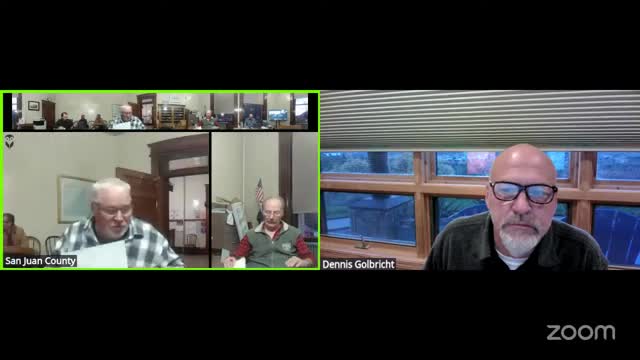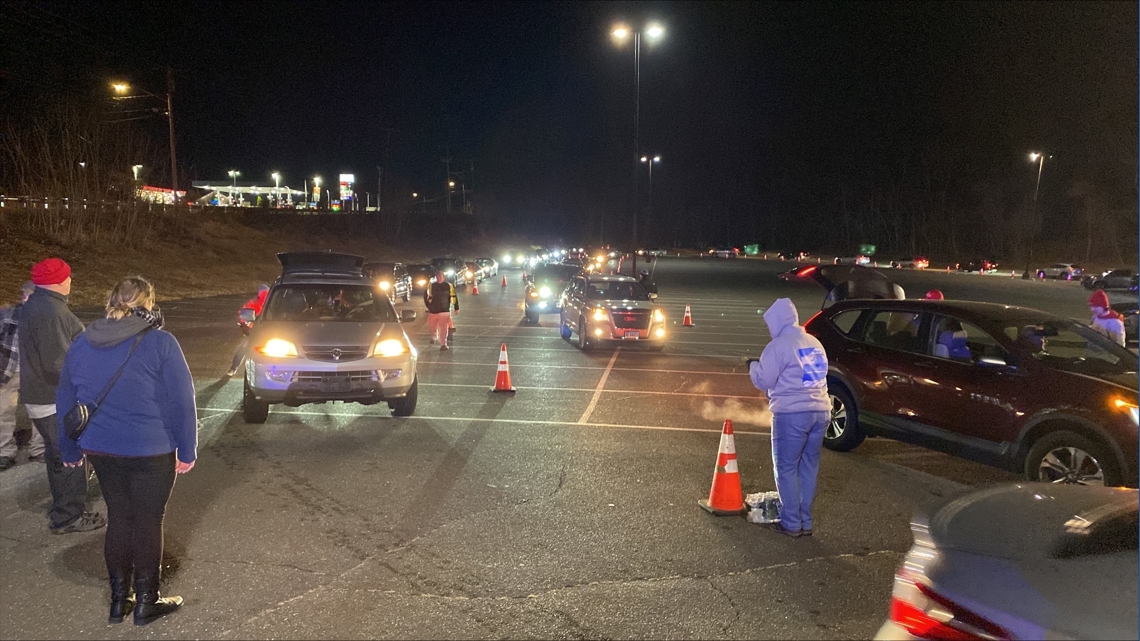Southwest Water Conservation chief urges focus on water measurement, wetlands rules – Citizen Portal AI

Report on Water Management and Sustainable Development in the Southwestern Water Conservation District
1.0 Overview of Regional Water Status and SDG Alignment
A recent briefing by Charlie Smith, President of the Southwestern Water Conservation District, highlighted critical issues in regional water management that directly impact the achievement of several Sustainable Development Goals (SDGs). Recent high-flow events have replenished water storage but also caused localized flooding, underscoring the challenges in managing water resources sustainably. The district’s strategic priorities are shifting from large-scale diversion projects to enhancing water quality and ecosystem health, aligning with SDG 6 (Clean Water and Sanitation), SDG 11 (Sustainable Cities and Communities), and SDG 15 (Life on Land).
2.0 Water Resource Management and Infrastructure
2.1 Recent Hydrological Events and Community Impact
Recent heavy runoff has presented a dual challenge, reflecting the need for resilient infrastructure and adaptive management strategies as outlined in SDG 11 and SDG 13 (Climate Action).
- A significant influx of approximately 80,000 acre-feet was recorded between Lehi and Viasito.
- While storage was substantially refilled, the event necessitated irrigation curtailments and resulted in harmful downstream flooding in Placito, impacting community safety and resilience.
2.2 Advancing SDG 6: Water Quality and Monitoring
The district is focusing on initiatives to improve the sustainable management of water and sanitation, a core target of SDG 6.
- State-Mandated Monitoring: A new state initiative requires the installation of measurement devices (weirs) on nearly all water diversions to improve data collection and support the sustainable management of Colorado River system water resources (Target 6.5).
- Funding Challenges: The state has allocated $1.5 million for these upgrades within the district. However, this amount is considered insufficient to meet the total estimated need, posing a significant barrier to achieving comprehensive water resource monitoring. Statewide, approximately $7 million has been allocated for this purpose.
3.0 Ecosystem Protection and Regulatory Frameworks
3.1 State Wetland Policy and Implications for SDG 15
The state is developing new rulemaking to replace the federal Section 404 Clean Water Act permit process. This new framework has significant implications for the protection of wetland ecosystems, a key component of SDG 15 (Life on Land) and SDG 14 (Life Below Water).
- Regulatory Concerns: The district has identified potential issues in the draft rules that may not align with local hydrological conditions.
- Mitigation Banking Limitations: Proposed rules include elevation cutoffs and service-area definitions that could prevent high-elevation projects in San Juan County from utilizing mitigation credits from lower-elevation banks. This could impede local conservation and restoration efforts.
- Local Resource Management: The district advocates for mitigation funds generated locally, such as from the Cascades area, to be reinvested within the same watershed to directly support local ecosystem health.
3.2 Sustainable Community Development
Proposed housing developments near Cascade and Howardsville raise questions about their impact on local wetlands. Balancing development with environmental protection is crucial for achieving SDG 11 (Sustainable Cities and Communities) by ensuring that urban expansion does not degrade critical ecosystems.
4.0 Strategic Partnerships and Future Actions
4.1 Fostering Partnerships for the Goals (SDG 17)
The district is actively engaging in multi-stakeholder partnerships to address these complex challenges.
- Expert Consultation: The district has retained Peter Butler, a former state water quality official, to represent its interests in the state rulemaking process.
- Inter-District Collaboration: Ongoing coordination with the Colorado River District is in place to address regulatory and funding issues.
- Support for Research: The district is tracking the funding needs of the Center for Snow and Avalanche Studies and Fort Lewis College’s Water Center, recognizing the importance of scientific data in achieving sustainability goals.
4.2 Financial Commitments and Recommendations
- Infrastructure Investment: The district has increased its annual grant program to $350,000 to support essential water infrastructure projects like headgates and channel improvements, contributing to resilient systems (SDG 9).
- Recommended Actions: It is recommended that stakeholders closely monitor the state rulemaking process, collaborate with legal counsel, and work with partner districts to secure adequate funding and provide technical responses to ensure that new regulations support local and regional sustainable development objectives.
Analysis of Sustainable Development Goals in the Article
1. Which SDGs are addressed or connected to the issues highlighted in the article?
- SDG 6: Clean Water and Sanitation
- SDG 9: Industry, Innovation and Infrastructure
- SDG 15: Life on Land
- SDG 17: Partnerships for the Goals
2. What specific targets under those SDGs can be identified based on the article’s content?
SDG 6: Clean Water and Sanitation
-
Target 6.3: By 2030, improve water quality by reducing pollution, eliminating dumping and minimizing release of hazardous chemicals and materials, halving the proportion of untreated wastewater and substantially increasing recycling and safe reuse globally.
Explanation: The article explicitly states that the district’s priorities have “shifted toward water quality work.” This directly aligns with the goal of improving water quality.
-
Target 6.4: By 2030, substantially increase water-use efficiency across all sectors and ensure sustainable withdrawals and supply of freshwater to address water scarcity and substantially reduce the number of people suffering from water scarcity.
Explanation: The state’s initiative to install measurement devices “on basically every diversion” is a direct effort to better track and manage Colorado River system uses, which is fundamental to increasing water-use efficiency and ensuring sustainable withdrawals.
-
Target 6.5: By 2030, implement integrated water resources management at all levels, including through transboundary cooperation as appropriate.
Explanation: The article discusses managing heavy runoff, downstream flooding, and coordinating between state and local districts on water use and regulations. This reflects the implementation of integrated water resources management at a local and state level.
SDG 9: Industry, Innovation and Infrastructure
-
Target 9.1: Develop quality, reliable, sustainable and resilient infrastructure, including regional and transborder infrastructure, to support economic development and human well-being, with a focus on affordable and equitable access for all.
Explanation: The article details efforts and funding for infrastructure upgrades. This includes the state setting aside “$1.5 million for upgrades” for measurement devices in the district and the district’s own grant program of “$350,000 annually to support infrastructure such as headgates and channel work.”
SDG 15: Life on Land
-
Target 15.1: By 2020, ensure the conservation, restoration and sustainable use of terrestrial and inland freshwater ecosystems and their services, in particular forests, wetlands, mountains and drylands, in line with obligations under international agreements.
Explanation: The article extensively discusses wetlands policy, including state rulemaking to replace federal permitting for “dredge-and-fill,” the development of mitigation approaches, and the creation of wetland-bank rules. These actions are directly related to the conservation and sustainable use of inland freshwater ecosystems (wetlands).
SDG 17: Partnerships for the Goals
-
Target 17.17: Encourage and promote effective public, public-private and civil society partnerships, building on the experience and resourcing strategies of partnerships.
Explanation: The entire article is an example of a multi-stakeholder partnership in action. The Southwestern Water Conservation District is engaging with San Juan County officials, the state government, the Colorado River District, private consultants (Peter Butler), developers, and academic institutions like Fort Lewis College’s Water Center. This collaboration is essential for addressing complex water management issues.
3. Are there any indicators mentioned or implied in the article that can be used to measure progress towards the identified targets?
SDG 6: Clean Water and Sanitation
- Implied Indicator for Target 6.4: The installation of measurement devices on “every diversion” serves as a direct mechanism to gather data for measuring water-use efficiency and the level of water stress. The amount of water gained, “80,000 acre feet,” is a quantitative measure of water availability.
- Implied Indicator for Target 6.3: The shift in district priorities to “water quality work” implies the future development of metrics to assess water quality, which is a precursor to measuring the proportion of water bodies with good ambient quality.
SDG 9: Industry, Innovation and Infrastructure
- Direct Indicator for Target 9.1: The financial investment in infrastructure is explicitly mentioned. This includes “$1.5 million” from the state for upgrades, a total of “$7 million total for measurement upgrades statewide,” and the district’s “$350,000 annually” grant program. These figures are direct indicators of financial resources mobilized for sustainable infrastructure.
SDG 15: Life on Land
- Implied Indicator for Target 15.1: The development and finalization of state rules for dredge-and-fill permitting and wetland-bank creation are policy-based indicators. The article notes that the “final state rules remain in development,” indicating that progress can be measured by the completion and implementation of this regulatory framework.
SDG 17: Partnerships for the Goals
- Qualitative Indicator for Target 17.17: The article provides qualitative evidence of partnerships. This includes the district retaining a former state official to “represent district interests,” working with the Colorado River District, and tracking the funding needs of academic centers. These actions serve as indicators of an active multi-stakeholder partnership.
4. Summary Table of SDGs, Targets, and Indicators
| SDGs | Targets | Indicators Identified in the Article |
|---|---|---|
| SDG 6: Clean Water and Sanitation |
6.3: Improve water quality. 6.4: Increase water-use efficiency and ensure sustainable withdrawals. 6.5: Implement integrated water resources management. |
– District’s priority shift to “water quality work.” – Installation of measurement devices on “every diversion” to track water use. – Quantitative measure of water gain: “80,000 acre feet.” |
| SDG 9: Industry, Innovation and Infrastructure | 9.1: Develop quality, reliable, sustainable and resilient infrastructure. |
– State funding of $1.5 million for district upgrades. – Statewide funding of $7 million for measurement upgrades. – District’s annual grant program of $350,000 for infrastructure (headgates, channel work). |
| SDG 15: Life on Land | 15.1: Ensure the conservation, restoration and sustainable use of terrestrial and inland freshwater ecosystems. |
– Ongoing state rulemaking for dredge-and-fill permitting to replace federal Section 404. – Development of wetland-bank rules and mitigation approaches. |
| SDG 17: Partnerships for the Goals | 17.17: Encourage and promote effective public, public-private and civil society partnerships. |
– Collaboration between the water district, San Juan County, and the state. – Retaining an expert consultant to represent district interests. – Tracking funding needs for academic institutions (Fort Lewis College’s Water Center). |
Source: citizenportal.ai
What is Your Reaction?
 Like
0
Like
0
 Dislike
0
Dislike
0
 Love
0
Love
0
 Funny
0
Funny
0
 Angry
0
Angry
0
 Sad
0
Sad
0
 Wow
0
Wow
0
















































/environment-climate-change-and-health-(ech)/water-sanitation-hygiene-and-health-(wsh)/landfill-tuvalu-36092.tmb-1200v.jpg?sfvrsn=5c21fe40_1#)

.jpg.webp?itok=0ZsAnae9#)
























